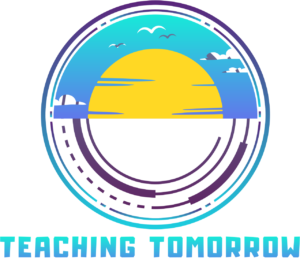Inbound Sales Closer: How to Convert Leads with Empathy, Strategy, and Authentic Conversations

Understanding the Role of an Inbound Sales Closer
An inbound sales closer plays a vital role in today’s digital-driven business world, where potential customers actively seek solutions rather than being chased by cold calls. Unlike traditional outbound sales professionals who reach out to uninterested prospects, inbound closers work with leads that have already shown intent or curiosity about a product or service. Their focus is to guide these warm leads through the decision-making process with authenticity and trust.
In this evolving landscape, the modern buyer has more access to information, product comparisons, and reviews than ever before. This shift means the old, hard-sell tactics no longer resonate. Instead, what drives results is a relationship-based approach — understanding needs, solving problems, and offering value. An inbound sales closer builds confidence by listening more and talking less, positioning themselves as a consultant rather than a salesperson.
When inbound sales closers engage potential customers, they lean into empathy and strategy. They don’t push; they align. By focusing on trust, transparency, and relevance, inbound closers become the bridge between marketing-generated leads and long-term customer relationships. In this role, every interaction is about creating a positive experience that makes prospects feel understood, respected, and supported in making the right buying decision.
Key Skills Every Inbound Sales Closer Must Master
The best inbound sales closers understand that skill mastery is the key to consistent performance. Beyond product knowledge, they bring emotional intelligence and adaptability to every call. Strong communication skills are at the heart of effective inbound selling — the ability to listen carefully, ask the right questions, and tailor responses to each buyer’s needs. Empathy allows closers to connect on a human level, which builds trust faster than scripted pitches.
Confidence in presenting solutions is equally important. Prospects can sense uncertainty, so an inbound closer must fully understand what they’re selling and how it benefits the customer. Objection handling is another critical skill — turning resistance into an opportunity for deeper conversation rather than confrontation. By addressing objections calmly and factually, closers keep the dialogue constructive and engaging.
Some of the essential skills include:
- Active listening to understand a buyer’s real motivations.
- Emotional intelligence to connect authentically.
- CRM management to track lead progress efficiently.
- Persuasive storytelling to make complex ideas relatable.
- Analytical thinking to assess data and improve conversion rates.
Each of these abilities shapes how inbound closers interact with prospects, enabling them to turn interest into commitment while maintaining professionalism and rapport throughout the sales process.
The Inbound Sales Process: Step-by-Step Conversion Framework
A structured approach helps inbound sales closers consistently convert leads into customers. It all starts with lead qualification, where closers evaluate incoming inquiries to determine readiness and fit. The goal is to prioritize leads most likely to buy, based on factors like engagement level, expressed interest, and demographic match.
Next comes the discovery stage, where closers dig deep into a prospect’s pain points, goals, and challenges. This phase requires thoughtful questioning and active listening — helping the closer uncover what truly matters to the potential buyer. The solution presentation then follows, aligning the product or service as the best path toward solving the identified challenges.
An effective inbound sales framework includes:
- Lead qualification: Focus on prospects that show intent.
- Discovery calls: Build trust by understanding needs.
- Presentation: Highlight value aligned with goals.
- Follow-up: Reinforce interest through nurturing communication.
- Closing: Guide prospects toward confident decisions.
Each stage in this framework relies on authenticity and timing. The closer’s job is not to push but to align the buyer’s vision with the right solution, ensuring a seamless, value-driven journey from curiosity to conversion.
Tools and Technology That Empower Inbound Sales Closers
Modern inbound sales closers rely on powerful technology to manage relationships and track performance. CRM systems such as HubSpot, Salesforce, and Pipedrive streamline the process of managing leads, logging conversations, and automating reminders for follow-ups. With these tools, closers can see exactly where each lead stands in the pipeline and plan their next move strategically.
Automation tools and AI-driven chatbots have revolutionized how inbound teams handle initial lead responses, ensuring no opportunity is lost to slow reaction times. Analytics dashboards, meanwhile, provide valuable insights into performance metrics such as conversion rates, response speed, and customer satisfaction levels. These insights help sales professionals make data-driven improvements.
Video conferencing tools like Zoom or Google Meet are also essential for personalized sales calls, particularly in remote environments. Demonstrating products live, sharing screens, or walking through solutions visually enhances understanding and builds trust. When integrated effectively, these technologies empower inbound sales closers to work smarter, not harder — allowing them to focus more on human connection and less on administrative tasks.
Common Mistakes Inbound Sales Closers Should Avoid
Even experienced sales professionals can fall into common traps that hinder conversions. One major mistake is focusing too much on closing rather than solving problems. This transactional approach often pushes potential clients away. Another error is ignoring valuable inbound data — such as lead engagement history or website behavior — which can provide powerful clues about a buyer’s readiness to purchase.
Personalization is another critical factor often overlooked. Generic emails or scripted calls make prospects feel like just another number. Instead, customized communication shows attentiveness and builds credibility. Additionally, many closers neglect post-sale relationships, missing opportunities for referrals and renewals that come from nurturing satisfied customers.
Avoid these pitfalls:
- Relying solely on sales scripts.
- Ignoring analytics and lead scoring data.
- Pushing for quick sales without building rapport.
- Forgetting follow-ups after closing a deal.
- Overcomplicating presentations with unnecessary jargon.
By steering clear of these mistakes, inbound sales closers can maintain genuine, long-term connections that lead to consistent results and strong client loyalty.
Strategies for Becoming a High-Performing Inbound Sales Closer
Top-performing inbound closers share a consistent mindset: they focus on the customer’s success before their own. Developing this mindset starts with understanding that selling is about service, not persuasion. Closers who embrace a customer-first philosophy naturally build trust and credibility.
Storytelling is a powerful strategy that transforms how buyers perceive value. Instead of listing product features, skilled closers weave stories that help prospects visualize success. Continuous learning is another non-negotiable factor. Whether through coaching sessions, online sales courses, or peer feedback, consistent development ensures adaptability in an ever-changing marketplace.
High-performing closers also track and refine their metrics, such as response time, conversion rates, and average deal value. They collaborate closely with marketing teams to ensure messaging consistency and lead quality. By aligning these strategies, inbound closers can create an environment of efficiency, motivation, and measurable success.
Career Opportunities and Growth Paths for Inbound Sales Closers
The demand for inbound sales professionals has never been higher. Businesses across industries — from SaaS to digital marketing agencies — are investing in skilled closers who can turn inbound interest into tangible revenue. The career path for an inbound sales closer offers flexibility, remote opportunities, and significant earning potential through commissions and bonuses.
Many inbound closers eventually progress into roles such as sales managers, business development executives, or customer success specialists. These roles expand their leadership, strategic, and mentorship capabilities. Moreover, industries like e-commerce, tech, and online education continue to provide abundant opportunities for professionals who excel at human-centered selling.
As automation evolves, it won’t replace inbound sales closers — it will amplify their effectiveness. Human connection remains the cornerstone of every sale, and technology simply enhances communication, allowing professionals to focus on strategy and empathy rather than repetitive tasks.
How to Train and Develop as an Inbound Sales Closer
Training is essential for success in inbound sales. Online courses, workshops, and certifications can strengthen knowledge in inbound methodologies, communication strategies, and negotiation techniques. Many platforms offer specialized inbound sales training, such as HubSpot Academy and Coursera.
Role-playing exercises help sales professionals sharpen their responses to objections and develop confidence in live calls. Mentorship also plays a key role — learning from experienced closers accelerates growth and builds real-world insight. Additionally, joining online sales communities provides ongoing peer support and access to the latest industry trends.
For consistent progress, inbound closers should:
- Set SMART goals (Specific, Measurable, Achievable, Relevant, and Time-bound).
- Review and analyze calls weekly for improvement.
- Attend webinars and read current sales literature.
- Practice communication clarity and empathy daily.
The commitment to continuous learning and self-assessment is what separates average closers from exceptional ones.
Frequently Asked Questions (FAQ)
1. What’s the difference between an inbound sales closer and an outbound closer?
An inbound sales closer works with leads who already show interest in a product or service, while outbound closers reach out to new or cold prospects who haven’t expressed prior intent.
2. How can beginners start a career as an inbound sales closer?
Beginners can start by taking online sales courses, practicing communication skills, and applying for entry-level positions that allow them to handle inbound leads under supervision.
3. What tools are essential for managing inbound leads effectively?
CRM systems like HubSpot or Salesforce, video conferencing tools, and analytics dashboards are critical for tracking performance and managing communication efficiently.
4. How do inbound closers build rapport during virtual sales calls?
They focus on active listening, personalized engagement, and using empathy to understand the prospect’s challenges rather than relying on hard-sell tactics.
5. What metrics define success for an inbound sales closer?
Key metrics include lead-to-customer conversion rate, average deal size, follow-up effectiveness, and customer retention levels
Takeaway
Being an effective inbound sales closer is more than mastering persuasion — it’s about building meaningful, trust-based relationships that lead to long-term business success. The ability to combine empathy, strategy, and data-driven insight allows closers to connect deeply with prospects and convert interest into action. Inbound selling is the future of ethical, human-centered commerce, and those who master it stand at the forefront of modern business growth.





